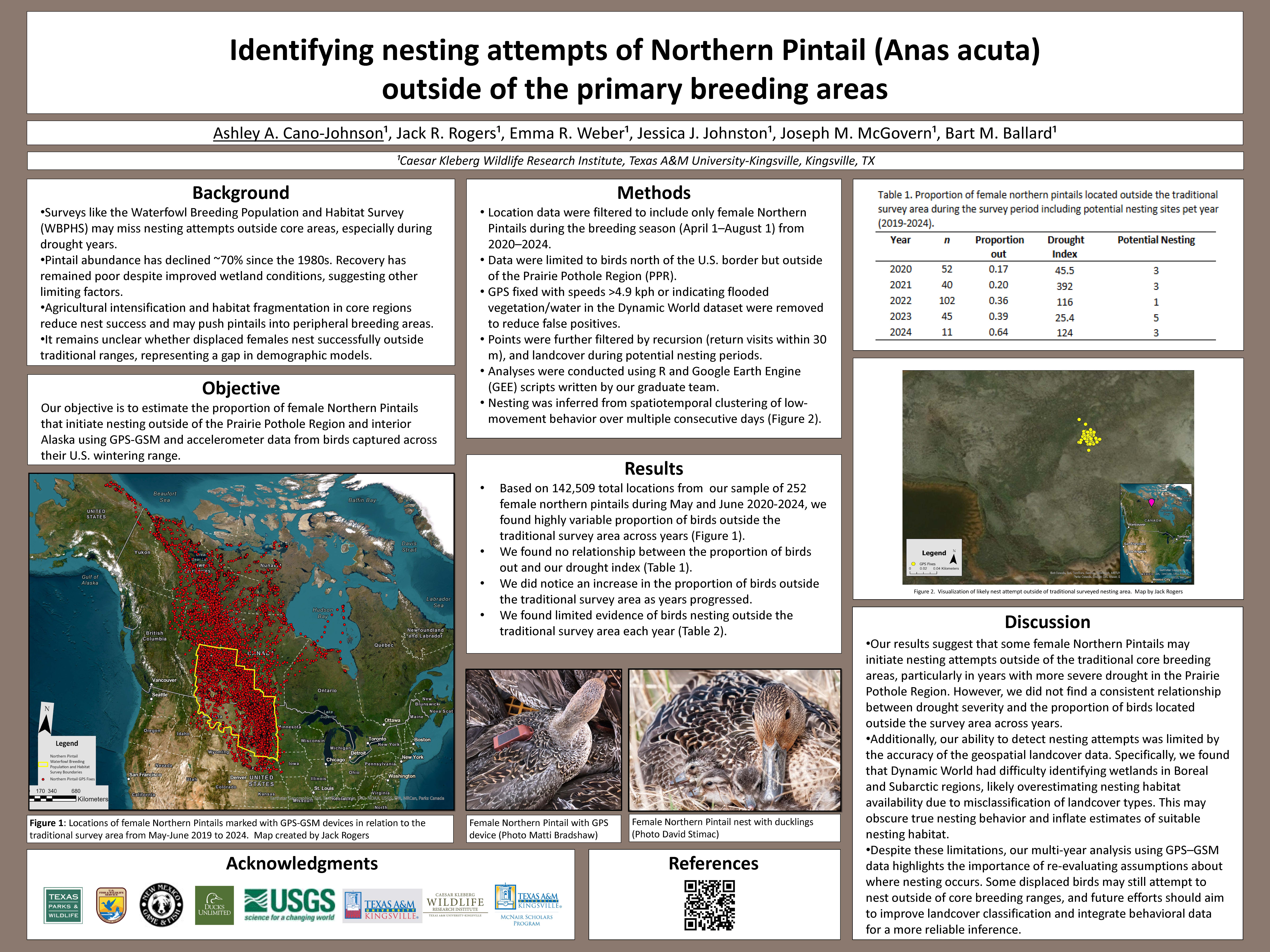Effective conservation of a species relies on accurate and representative demographic information. Traditional breeding surveys are often either limited in spatial coverage (ground surveys) or require assumptions about ratios of individuals breeding (i.e., aerial surveys). The northern pintail (Anas acuta, hereafter “pintail”) is a species of conservation concern in North America that primarily nests in the Prairie Pothole Region (PPR) and certain regions of interior Alaska. Population shifts to northern Canada during drought years in the PPR are well-documented. However, individuals settling outside of the primary breeding areas are often assumed to be non-breeders, with little direct evidence. Increasing frequency and severity of drought in the PPR may cause pintails to increasingly settle outside core breeding areas due to declining wetland conditions and changing climate patterns. We aim to estimate the proportion of marked pintails nesting outside of the PPR and Alaska. We deployed GPS – GSM transmitters with onboard triaxial accelerometers on female pintails throughout their U.S. wintering range from 2019 – 2024 and obtained 311 bird-years of breeding data. We will first identify likely nest locations using a series of spatiotemporal filters on hourly GPS location and accelerometer data. Locations from 1 April through 1 August, that are not in water, with movement speed <5 kph (i.e., not flying), and revisited at least once during dawn hours will be considered potential nest attempts. We will then use data from successful nesting attempts to train a machine-learning algorithm to identify nest attempts that failed prior to incubation. This method allows for a spatially explicit and objective assessment of nesting locations across the species’ North American breeding range. This will refine our understanding of pintail breeding ecology and provide valuable insight into potential updates to their breeding range, which is essential for adaptive waterfowl management in a changing environment.
Faculty Mentor: Dr. Bart Ballard
Department of Rangeland and Wildlife Sciences


